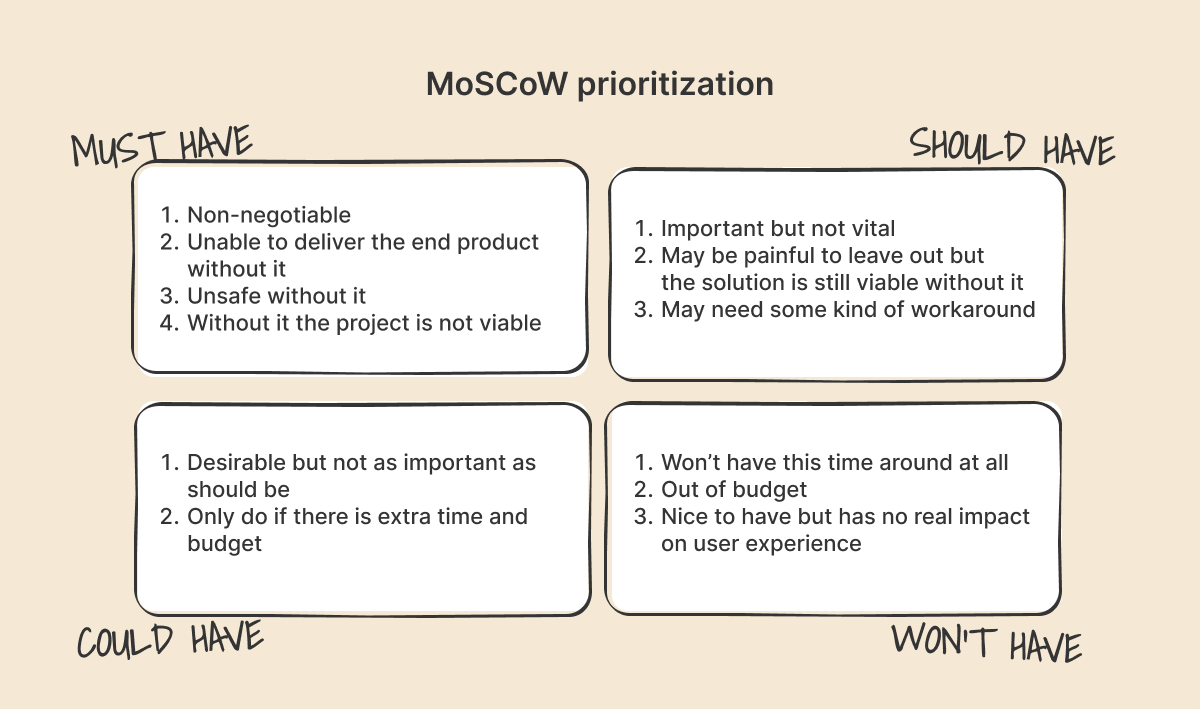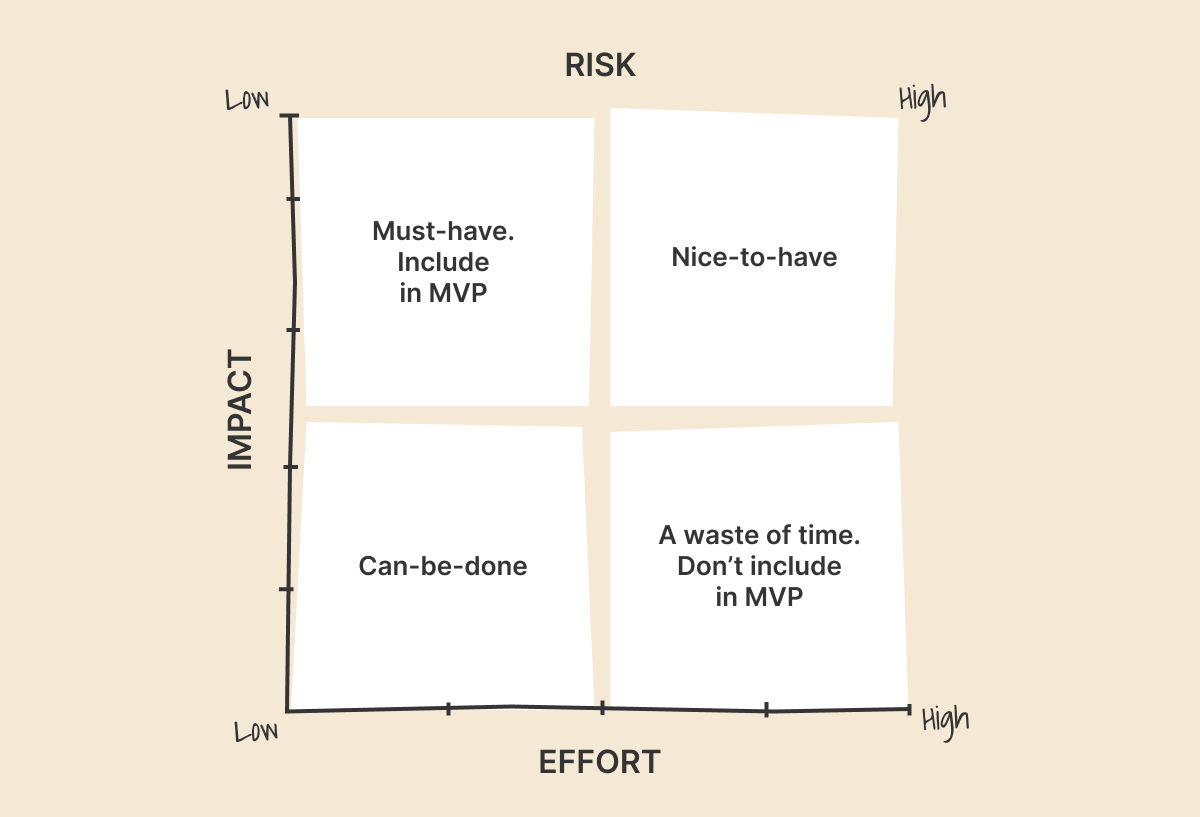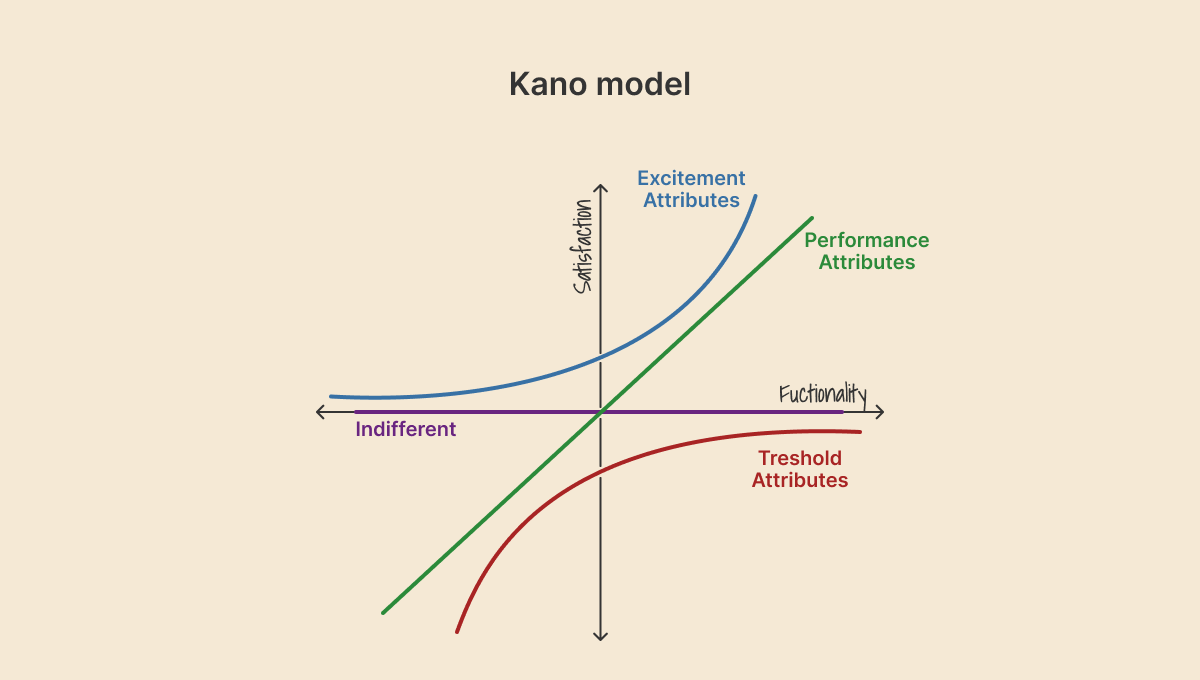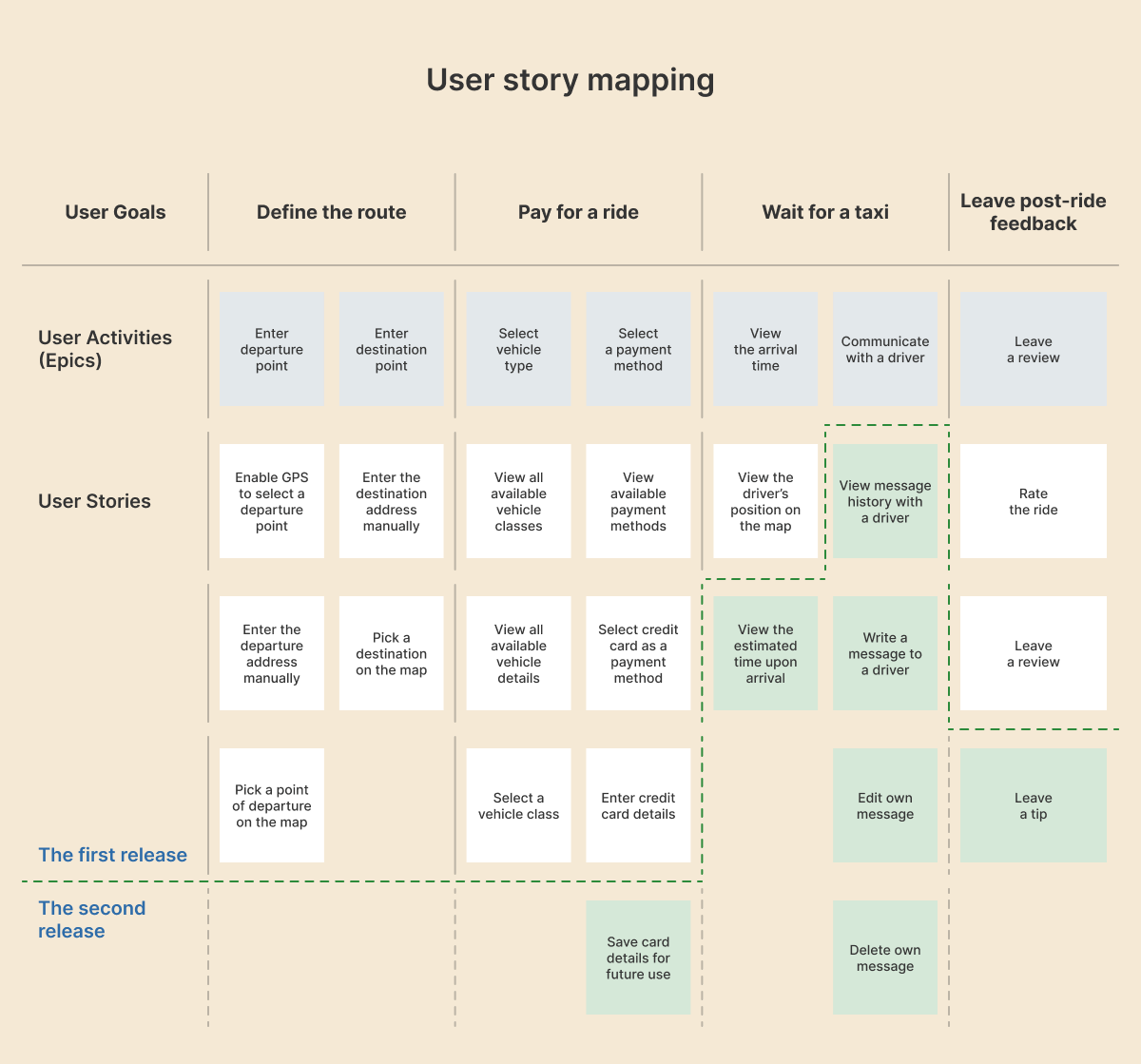Any business idea can become the next unicorn, but not everyone knows the steps they need to take to succeed. Even well-established companies can make wrong decisions despite years of experience in their field.
According to the US Bureau of Labor Statistics, 81% of new businesses pass the first year with flying colors, 70% remain after the second year, and just a third cross the 10-year threshold. Those who beat the odds and thrive in the market share one trait: the ability to produce high-value features at a fast pace. To achieve release agility, startups define features that are most valuable, impactful, and urgent.
But relying on your gut feeling isn't the right way to prioritize features for your minimum viable product. In our guide, we will show you the most popular feature prioritization methods product managers use to pinpoint non-negotiables for MVPs.
What are MVP and feature prioritization?
If you are just entering the market, it's better to play it safe and test the market waters by developing an MVP. A minimum viable product (MVP) is a simplified version of the end product that includes essential features.
An MVP allows testing the business idea and receiving initial user feedback. The product's future will depend on the results of this stage.
Given the significance of the MVP, you should carefully select the features for the first release. The choice requires deep research and thorough analysis of market trends, direct and indirect competitors, target audience, and risks.
Feature prioritization helps define which functionality addresses the urgent needs of your potential users, provides value, and demonstrates uniqueness.
Why prioritize features?
Every business strives for excellent financial outcomes. And many factors influence whether you get on top of the market and achieve your business goals or take a nosedive. Some of them are chalked up to feature prioritization, including:
Creating a unique product
Today, the App Store and Google Play feature more than 5.4 million apps, so the chances are high that a product like yours already exists on the market. Feature prioritization lets you take a closer look at the market and avoid creating the 100th Uber-like app.
Developing a product that the market needs
Nearly half of startups fail because there is no market demand for their solutions, and entrepreneurs often overstate the importance of their products. To be in high demand, your product needs to deliver by tackling users' problems. The feature prioritization process helps you identify your users' pain points and adjust your solution as needed.
Getting to the market faster
The fundamental goal of building an MVP is to get to the market as soon as possible and test the app’s viability with real customers. Since the app market is highly volatile, an early launch gives your app an unmatched competitive advantage.
Estimating the project’s timeline and budget
An MVP approach assumes that the development of a full-scale product will be split up into sprints. The number of sprints depends on the complexity of your app, the number of platforms, features, and integrations. Knowing what features are in the backlog can help you outline the project timeline and estimate the budget.
How to pick the right features for your MVP
You need to analyze various factors to determine the functionality of your MVP. Below is a step-by-step guide that can help you decide on your MVP features by:
Studying your users
In-depth knowledge of your target audience helps you select the right features. Essentially, a target audience analysis provides direction for the project and ensures you're in the same league as your customers. In addition, this knowledge can help you create user stories.
Identifying users’ pain points
Products are built to serve customers, ease their lives, and solve specific problems. Think of your users and ask yourself, “What problems do they have?” To answer this question, you should conduct user interviews, make observations, and create user personas.
Learning how users currently solve these problems
Understanding how your users solve their problems can help you determine whether the identified problems are crucial. If so, you can look for different ways to improve current solutions. If not, you can concentrate your efforts on more urgent issues.
Researching your direct and indirect competitors
Your business rivals can be divided into two key categories – direct and indirect competitors. Direct competitors, like Bolt and Uber, offer products or services that are essentially the same. Here, both businesses are competing for the same potential market.
Indirect competitors offer different solutions to the same target market and can take a share of your potential audience. Google Maps and Uber are examples of indirect competitors because they offer different services, but both apps can take users from point A to point B.
While studying your competitors, examine their products to define their strengths and weaknesses. An in-depth competitor analysis lets you discover what they lack and add their missing features to your MVP.
Working out a unique value proposition
Your mobile app needs something special to stand out from the competition. First, you’ll want to consider why users should choose your app over others.
What are the unique features that no other app on the market offers? Understanding what makes your app unique can help prioritize the features for your MVP.
For example, Uber allows users to order a taxi without making a phone call. This unique feature enables Uber to complete 18.7 million trips daily.
However, being unique doesn’t always mean adding additional features. Sometimes, to deliver value to the customer, you have to get rid of functionality to make the process easier.
For example, the Domino’s app offers zero-click ordering. The app automatically places an order when users launch the app, and canceling the order takes just a few clicks.
While prioritizing the features, it’s better to focus on customers’ needs. To do so, you’ll want to load your MVP with features that the market lacks.
How to prioritize MVP features
There is no standard approach to categorizing software features, but you can utilize one of the methods described below to load your MVP with the right features. Our list of MVP feature prioritization models includes:
MoSCoW matrix
The MoSCoW matrix is a simple method of prioritizing MVP features that involves dividing them into four groups:
- Mo - Must have: These are the key features of your app that make it viable. Without these features, your app cannot function.
- S - Should have: Without should-haves, your MVP can work, but it’s better not to leave them out.
- Co - Could have: Could-haves are add-ons that set your MVP apart from other solutions on the market, but you can launch your early product version without them.
- W - Won’t have (W): These features aren’t likely to be loaded to your MVP, but you’ll need to implement them in the full-scale version of your app.

Feature priority matrix
A feature priority matrix is similar to the MoSCoW matrix method, as it also has four categories into which MVP features can fall. However, the feature priority matrix has axes of decision-making; all the features are rated according to:
- Effort: How many resources does feature implementation require?
- Impact: What impact does the feature have on your customers?
- Risk: How difficult is it to develop this feature?
Next, you have to split your features into four categories:
- Must-have: Includes necessary and low-risk features
- Can-be-done: Refers to the features that can be implemented in later versions
- Nice-to-have: Describes the features that are not particularly important
- Waste-of-time: Are low-impact and high-risk features

Feature bucket
The feature bucket model is another standard method of feature prioritization. The categories are “buckets,” and features can be divided into three main buckets:
- Metric movers: Enhance the app’s metrics like customer satisfaction, user engagement, and income. This bucket contains the essential features.
- Delights: Contain minor, attractive features like emojis, stickers, or animations.
- Customer requests: Include features that your target users need; these requests improve the functionality of your app. For example, customers may request screen recording or screen sharing if an app is for video conferencing.

Kano model
The Kano model was named after its Japanese inventor, Noriaki Kano. It’s one of the most complex models used for feature prioritization. In this model, Kano adopts a different approach and introduces a new criterion: money.

The model maps satisfaction against money and effort. According to the Kano model, the features fall into four categories:
- Basic features: These are similar to the MoSCoW’s must-haves. These features aren’t the cheapest but are vital for your MVP. As a rule, they do require a lot of money and effort.
- Neutral features: Are nice to have, but don’t add much value to your app. In most cases, they have limited usage.
- Performance features: They aren’t mandatory, but can significantly enhance the overall user experience.
- Satisfaction features: These features power up your mobile app solution with a competitive advantage, and they form your unique selling proposition.
Relative weighting prioritization
This method combines the Kano model and the MoSCoW matrix to define the value of MVP features. It considers both the cost of the feature and the benefits of that feature to provide a weighted score between the two criteria.
The relative weighting prioritization model also takes into account the negative impact of not building the feature. Here’s what this model takes into consideration to create a feature’s score:
- Benefit score: Benefits that the features can bring to the app.
- Penalty score: Is the negative impact of not implementing the feature.
- Cost score: The cost required to build the feature.
- Risk score: Risks that the team may face while building the feature.
Each feature receives a score from 1 to 9, and the value is calculated using the following formula: (Penalty score + Benefit score) / (Risk score + Cost score).
Effort and impact matrix
This matrix is also called a value and complexity technique. It prioritizes MVP features by analyzing the effort required for their development and their long-term impact. The results are visualized in a matrix and placed into one of the categories according to their priorities:
- Reconsider
- Fill-ins
- Major projects
- Quick wins

RICE scoring
The RICE scoring model helps determine which features to put on your MVP roadmap by scoring them according to four factors, where each parameter has its own scoring formula. Here’s how to score features according to the RICE scoring model:
- R - Reach: Estimate how many users this feature can affect. Reach is measured in users per month, transactions per quarter, etc.
- I - Impact: How will this feature affect users?
- 0.25 – minimal impact
- 0.5 – weak impact
- 1 – medium impact
- 2 – high impact
- 3 – huge impact
- C - Confidence: How confident are you in estimates of reach and impact?
- 50% – low confidence
- 80% – medium confidence
- 100% – high confidence
- E - Effort: How much time and money will it take to build this feature?
You need to estimate the total number of resources, such as product, design, engineering, and testing, required to complete the project. As a rule, it’s estimated in person-months.
This rule means that if your feature takes a total of five person-months, your effort score will be five. Then, you need to use the formula given below to determine what features should really be included in your MVP:

User story mapping
User story mapping is one of the most popular prioritization techniques that involves outlining all users’ interactions with the planned product. This method helps visualize how users interact with the app, predict their actions, and identify must-have features.

The prioritization starts from building the logic of your app and defining the users’ goals; for example, booking a flight in a travel app. Here, the key action (booking a flight) is split into substeps like picking the destination point, choosing an airline, submitting user details, requesting an airport transfer, etc.
Then, each step is written as a user story: “As a [type of user], I need to [action] so that [value].” When all the user stories are ready, all the customer goals and activities need to be shortened and mapped in descending order of feature priority. This map can help identify which features should be included in the MVP and which can be added in later app versions.
Buy-a-feature prioritization model
The buy-a-feature prioritization model is more like a “game” that involves customers and stakeholders. It has no fixed scenario, and you can run it up to your product requirements.
In this model, both parties agree on a price for each feature and then compare it with the development cost. Naturally, the more effort the feature development takes, the higher the price.
To play this game, you need to select a list of features or upgrades and estimate each cost. The estimation should include the time, money, and effort required to build this feature.
Then, you gather a group of up to eight people and lock in the amount of money they can use for estimating features. Next, ask the participants to buy the features they need (or like). When the buying round is over, ask them to share their thoughts and explain why they spent the money the way they did.
After the discussion, you can make up a list of vital features for your MVP. This method can replace monotonous surveys with a fun game that can help you understand your users and load your MVP with high-impact features.
How Orangesoft evaluates product features for their clients' projects
Feature prioritization is an integral part of the mobile app development process. With 15 years of experience, Orangesoft has helped many startups navigate the deep waters of mobile app development from an MVP to a full-scale product with millions of active users using two different approaches:
- If the client does not know which features to launch with their MVP, our team starts from scratch with a discovery phase, where we analyze the market, the business, and target users to define the scope of the MVP and the future backlog.
- If the client knows what features to add, our team will review them, provide suggestions, and bring the client's robust mobile app solution to life.
When creating an MVP, we think about the end users and run a thorough analysis to load your app with the proper features. Feature prioritization involves active cooperation between the business analyst, the project manager, and the client.
First, our business analysts help analyze the market, outline challenges, and present the results to stakeholders. They are the people who decide which strategy or framework to use for feature prioritization. Business analysts work closely with product owners in terms of forecasting and overseeing product development.
Then, our project managers organize the team and keep track of the project workflow. A project manager's work includes:
- Estimating project workflows
- Taking care of process documentation
- Mobilizing the team and assigning roles
- Defining project needs
- Keeping track of the development progress
Finally, the client’s participation in this process is extremely important. They help by providing industry knowledge and collecting valuable information about their target audience.
Key takeaways
The vast choice of frameworks, matrices, and models for feature prioritization may leave you confused, but you don’t have to apply them all to produce a successful app. Regardless of the approach, make your target users your number-one priority.
The process of feature prioritization is highly iterative. At Orangesoft, we choose feature prioritization models based on the client’s project and requirements to make the best decisions moving forward.
